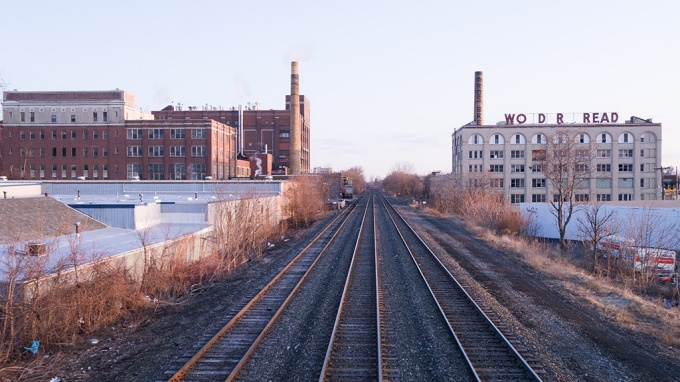Active Connections

"Active Connections": A still from the film of Buffalo's Belt Line, along which some industry remains active, while others await reuse.
Completed in 1882, the New York Central Belt Line formed a 15-mile loop around the core of the city, connecting Buffalo's major industrial sites and neighborhoods for the carriage of freight and passengers. While no longer serving local commuters through its 19 passenger stations, the tracks remain active for the few remaining industries scattered along the corridor, connecting Buffalo to nearby Niagara Falls and to cities across the border in Canada. On the west side of the tracks, the former National Bisquit Company (Nabisco) plant, now operated by Milk Bone, continues production, as it has since 1922. To the east, the abandoned Wonder Bread factory lies in wait.
